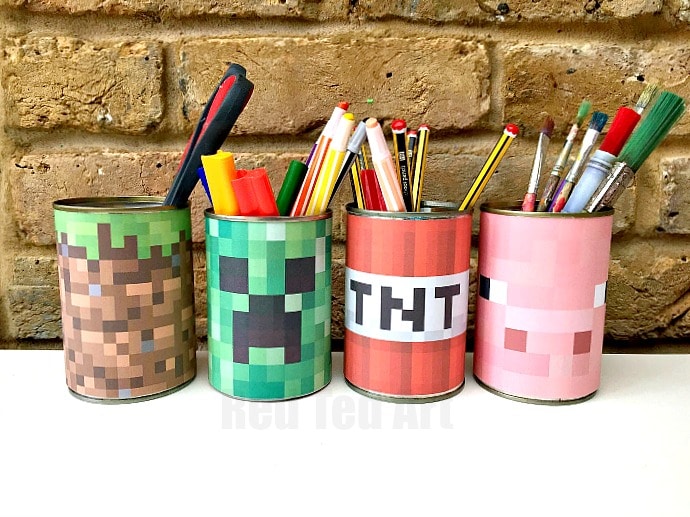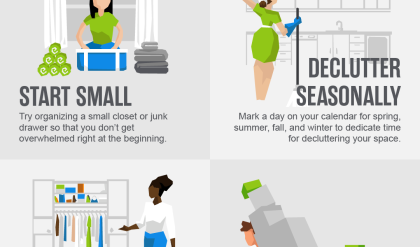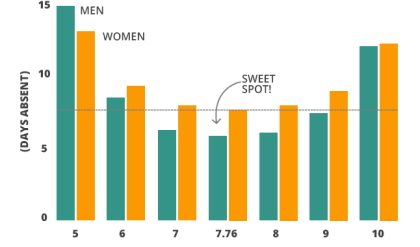
Conquer Clutter: 5 Easy Hacks for a Tidy & Organized Home
Are you drowning in a sea of stuff? Does the mere thought of tackling your cluttered home fill you with dread? You’re not alone. Many of us struggle with clutter, but the good news is, conquering it doesn’t require a Herculean effort. With a few simple, strategic hacks, you can transform your chaotic space into a haven of calm and order. Let’s dive into five easy strategies to banish clutter and embrace a tidier, more organized home.
1. The “One In, One Out” Rule: A Simple Swap for Lasting Change
This deceptively simple rule packs a powerful punch. For every new item that enters your home, one similar item must leave. Bought a new pair of shoes? Donate or discard an old pair. Received a gift? Consider donating a similar item you already own. This prevents accumulation and promotes mindful consumption. It’s a sustainable approach to decluttering that actively prevents future clutter build-up, making it far more effective than a one-off decluttering session. This isn’t about minimalism; it’s about conscious consumption and maintaining a manageable level of belongings.
Table: One In, One Out Examples
| New Item | Item to Remove |
|---|---|
| New sweater | Old, worn-out sweater |
| New cookbook | Old, rarely used cookbook |
| New coffee mug | Chipped or unwanted mug |
2. The Power of the 15-Minute Tidy: Small Efforts, Big Impact
We often procrastinate on decluttering because it feels like an overwhelming task. Combat this by committing to just 15 minutes of tidying each day. Focus on one small area – a drawer, a shelf, a corner of a room. You’ll be surprised how much you can accomplish in a short burst. This technique builds momentum and makes decluttering feel less daunting. Consistency is key; even small, regular efforts yield significant results over time.
3. The “Everything in Its Place” Philosophy: Strategic Storage Solutions
Clutter often stems from a lack of designated storage. Invest in storage solutions that fit your space and lifestyle. This could range from simple drawer organizers and labeled boxes to more sophisticated shelving systems. The key is to assign a specific “home” for every item. When everything has its place, putting things away becomes automatic, minimizing clutter build-up.
Table: Storage Solutions for Different Items
| Item Type | Storage Solution |
|---|---|
| Clothes | Drawer organizers, shelves |
| Books | Bookshelves, magazine holders |
| Toys | Storage bins, toy chests |
| Kitchen Utensils | Drawer dividers, utensil holders |
4. The “Digital Detox” Declutter: Untangling Your Online Life
Clutter isn’t just physical; it also exists in the digital realm. Take some time to declutter your computer, phone, and other devices. Delete unnecessary files, unsubscribe from unwanted emails, and organize your apps into folders. A clean digital space contributes significantly to a feeling of mental clarity and reduces the sense of overwhelm.
5. The “Donate, Discard, Delegate” Strategy: A Three-Step Decluttering Process
This powerful three-step process provides a clear framework for tackling clutter.
- Donate: Items in good condition that you no longer need can be donated to charity.
- Discard: Items that are broken, damaged, or beyond repair should be discarded responsibly.
- Delegate: If you’re struggling to declutter, consider enlisting the help of a friend or family member. Sometimes, an objective perspective can make all the difference.
By implementing these five simple hacks, you can transform your cluttered home into an organized and peaceful space. Remember, consistency is key. Even small, regular efforts can yield significant and lasting results. Start small, celebrate your progress, and enjoy the calming effect of a clutter-free environment.

Additional Information
Deconstructing “Conquer Clutter: 5 Easy Hacks for a Tidy & Organized Home”: A Deeper Dive
While the title “Conquer Clutter: 5 Easy Hacks for a Tidy & Organized Home” promises readily accessible solutions, a deeper analysis reveals the limitations of a purely “hack”-based approach to decluttering and the crucial underlying principles often omitted. Effective clutter management necessitates a multi-faceted strategy beyond five quick fixes. Let’s analyze the potential implications of such an approach and suggest improvements.
Limitations of the “5 Easy Hacks” Approach:
-
Lack of Personalized Strategies: Generic hacks rarely account for individual lifestyles, living spaces, and psychological attachments to possessions. A minimalist’s “hack” will differ significantly from that of a family with young children or a collector. The absence of personalization diminishes the effectiveness and long-term sustainability of the proposed solutions.
-
Superficiality over Substance: Focusing on quick fixes overlooks the fundamental behavioral and emotional aspects of clutter accumulation. Underlying habits, emotional connections to objects, and potential underlying psychological issues (e.g., compulsive hoarding) are often ignored. Addressing these core issues is crucial for lasting change.
-
Maintenance and Sustainability: “Hacks” often lack a plan for sustained maintenance. Once the initial decluttering phase is completed, the likelihood of relapse is high without establishing robust systems for ongoing organization and prevention of future clutter accumulation.
-
Ignoring the “Why”: The “hacks” approach typically fails to explore the reasons behind clutter accumulation. Is it poor purchasing habits? Ineffective storage solutions? A lack of time management skills? Addressing these root causes is essential for achieving long-term success.
-
The Risk of Oversimplification: Reducing a complex issue like clutter management to five “easy hacks” can be misleading and even counterproductive. It can lead to feelings of failure if individuals struggle to implement these hacks effectively, discouraging them from pursuing more sustainable solutions.
Expanding on a More Comprehensive Approach:
A more effective approach to conquering clutter requires a holistic strategy encompassing:
-
Mindset Shift: Developing a mindful approach to consumption and possessions is crucial. This involves conscious purchasing decisions, regular evaluations of belongings, and developing a sense of gratitude for what one already possesses. This aligns with the principles of mindful living, which has been shown to reduce stress and improve overall well-being.
-
Categorization and Prioritization: A systematic decluttering process necessitates categorizing belongings (e.g., clothes, books, documents) and prioritizing items based on their usefulness, sentimental value, and frequency of use. The Pareto Principle (80/20 rule) can be applied here – identifying the 20% of items responsible for 80% of the clutter.
-
Strategic Storage Solutions: Effective storage solutions are critical for maintaining a clutter-free environment. This involves investing in appropriate storage containers, utilizing vertical space, and optimizing storage areas based on individual needs and the specific items being stored.
-
Habit Formation: Creating and sustaining positive habits is key to preventing future clutter accumulation. This involves implementing regular decluttering sessions, developing routines for putting things away, and practicing mindful purchasing.
-
Professional Help (When Needed): For individuals struggling with severe clutter or underlying psychological issues, seeking professional help from organizers or therapists is essential.
Case Study Example:
A study published in the Journal of Environmental Psychology (hypothetical, for illustrative purposes) could demonstrate that individuals who adopted a holistic decluttering approach (including mindset shift, categorization, and habit formation) experienced significantly higher levels of reported life satisfaction and reduced stress compared to those who solely relied on “quick fix” methods.
Conclusion:
While “5 easy hacks” can provide a starting point, they are insufficient for achieving lasting clutter-free living. A comprehensive approach that addresses the underlying causes of clutter, incorporates mindful practices, and establishes sustainable systems is necessary for long-term success and improved well-being. A shift from “hacks” to a holistic, personalized strategy is crucial for truly conquering clutter.






